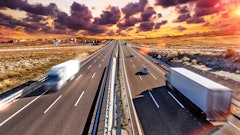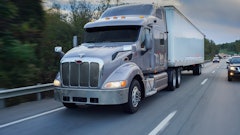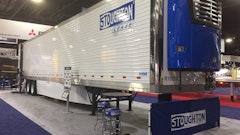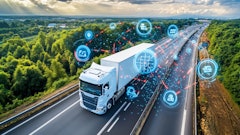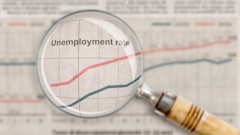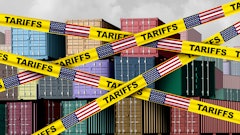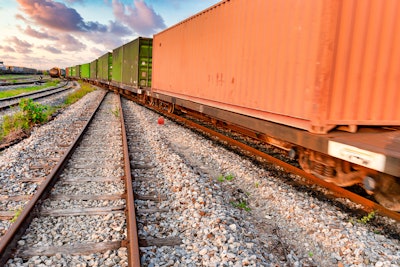
Until recently, North American rail shipment visibility has often been “too little, too late.”
The same visibility that enables everyday consumers to see where an online order of candy bars is located—and when it will be delivered—is the result of supply chain systems that shippers use to efficiently and consistently meet those expectations.
Many bulk shippers who use rail don’t need that kind of precise tracking. On the other hand, producers and receivers of fast-moving consumer goods and other time sensitive shipments have often foregone safer, greener, and more efficient rail services for the highway mode—which has adopted GPS and other technologies to provide real-time shipment visibility.
The good news is that enhanced visibility with combined Artificial Intelligence (AI) and Machine Learning (ML) analysis are now being applied to the location, condition, and status data generated by some 1.6 million cars moving across the rail network every day.
A broad spectrum of rail shipments—from intermodal to bulk commodities to individual carloads—can all be handled with greater safety, managed more efficiently, and tracked with improved reliability.
In other words, it’s time for shippers to determine if they are making the best use of rail to keep their supply chains competitive because rail shipments are now being more accurately tracked and more efficiently managed with the support of enhanced visibility systems. This better visibility results from technology that processes data from thousands of wayside detectors and onboard railcar systems. The technology intelligently analyzes the massive flow of rail car data combined with information about current network conditions and historical performance data.
More ETA Updates, More Often
Supply chain performance is optimized with critical shipment status information as soon as it’s available, and ETAs are updated when conditions change.
As platforms powered by this technology develop additional data from real-world conditions and performance, they apply what is learned and continuously improve the accuracy and reliability of forecasts and real-time ETAs.
The railroad industry is also developing Advanced Visibility Solutions (AVS) that will provide even more granular rail shipment visibility data. AVS is envisioned as a platform that would consist of features including data ingestion from varied formats and multiple hardware vendors; data storage and normalization; data quality assurance; advanced analytics; distribution of data via APIs; EDI; GPS data married with CLMs; or interactive dashboards.
It's still true that there are significant differences between rail and highway shipping environments. With 600+ railroads, thousands of terminals, and tens of thousands of truckers connecting globally dispersed shippers and receivers, it simply isn’t possible for your in-house system to collect and manage the data you need. And it isn’t necessary.
Broad-reaching technology platforms are available to analyze and present data and recommendations for rail shippers including:
- Real-time location visibility and alerting
- Accurate, single-source shipment billing
- Demurrage mitigation & auditing
- Rates & routes
- Custom dashboards & reports
Just as important, today’s technology platforms are able to standardize virtually any data format.
As you start your review of rail options, look for a provider with systems that are capable of immediately adapting as railroads develop new data and new data sources, as well as from events happening in real time.
Optimize Resource Utilization
The same rail industry advances being used by shippers are also available to receivers who can now monitor inbound volumes to optimize labor, production equipment, and floor space utilization as well as inventory management.
Now receivers can:
- eliminate visibility gaps with real-time shipment data direct from industry sources, enabling immediate identification and resolution of issues;
- improve inbound and outbound load tracing;
- easily manage rail shipments using templates and built-in reports that don’t require years of rail shipping experience to understand, and which can be immediately implemented without training; and
- identify system cars based on serving yard location and/or waybill city destination for better planning of pipeline and production.
Shippers awaiting empty inbound rail equipment to load for outbound shipment can experience similar positive results.
Once containers are loaded aboard railcars, trackside Automated Equipment Identification (AEI) scanners read tags affixed to the cars. Railroads strategically place AEI scanners to ensure event coverage as railcars move throughout their trips. Each read identifies the place and time of the railcar event, and the same movement information is recorded for both the car and container.
This information is then transmitted to the respective railroad, turned into an “event,” stored in the railroad's system and forwarded to relevant parties via TRAIN-II message system or as a Car Location Message (CLM).
The car and container association persists until the container is removed (or deramped) from the car at the destination intermodal facility.
Moreover, all this data from 600+ North American railroads can be managed through new, single source platforms, obviating the need for shippers and 3PLs to perform burdensome searches across multiple rail carrier websites.
Access Rail’s Greater Efficiency
Rail shipping’s greater efficiency can more than compensate for somewhat longer-than-truck transit times. By leveraging improved visibility technology to create reliable and predictable origin-to-destination schedules, supply chain operations can increase the percentage of rail used while maintaining high customer satisfaction at lower total costs and significantly reduced CO2 emissions.
Carloads, whether they are hoppers, tanks, boxes, gondolas or flat cars, are the single most important driver of railroad business. That’s why railroads–and particularly regional and short line operators—are investing in technologies to attract new business in this sector.
Shippers are finding they can improve and increase their use of rail when they have real-time, actionable reporting to achieve key supply chain goals including:
- Easy identification of problem cars and shipment exceptions;
- Improved operations planning and fleet optimization;
- A birds-eye view of the entire shipment lifecycle;
- Reduced blind spots and unexpected delays;
- Easy railcar, shipment and container tracking;
- Customized reporting and insights
Instead of going through the tedious process of accessing different systems, websites, and spreadsheets to facilitate shipping, technology platforms have been designed to handle all of a shipper’s freight rail needs under one roof. Customizable interfaces allow users to prioritize the features they need to see at a glance, which creates a much more seamless experience than constantly changing tabs and programs to access necessary data.
With the user experience at the forefront, every shipper can access insights to help them compete in the marketplace.
Getting started doesn’t have to be complicated. If the transition is handled properly—taking small steps at first—the conversion from truck to rail can be accomplished without disruption and faster than might be expected.
By working with experienced technology partners, new rail shippers can start with a few tests moves and become familiar with the performance of dashboards and alert systems. As experience is gained, the use of rail can be expanded one corridor at a time to gain further experience and to develop internal buy-in across the enterprise, from loading dock to C-Suite.
As the safety, economic and sustainability advantages are realized, rail logistics will more and more become an integral part of supply chain operations. The sooner shippers get started the sooner they will achieve more efficient operations while keeping customers happy.

![Pros To Know 2026 [color]](https://img.sdcexec.com/mindful/acbm/workspaces/default/uploads/2025/08/prostoknow-2026-color.mduFvhpgMk.png?auto=format%2Ccompress&bg=fff&fill-color=fff&fit=fill&h=100&q=70&w=100)


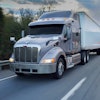
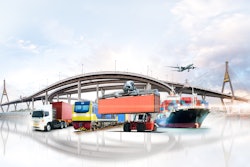


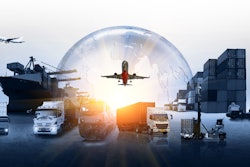
![Pros To Know 2026 [color]](https://img.sdcexec.com/mindful/acbm/workspaces/default/uploads/2025/08/prostoknow-2026-color.mduFvhpgMk.png?ar=16%3A9&auto=format%2Ccompress&bg=fff&fill-color=fff&fit=fill&h=135&q=70&w=240)

